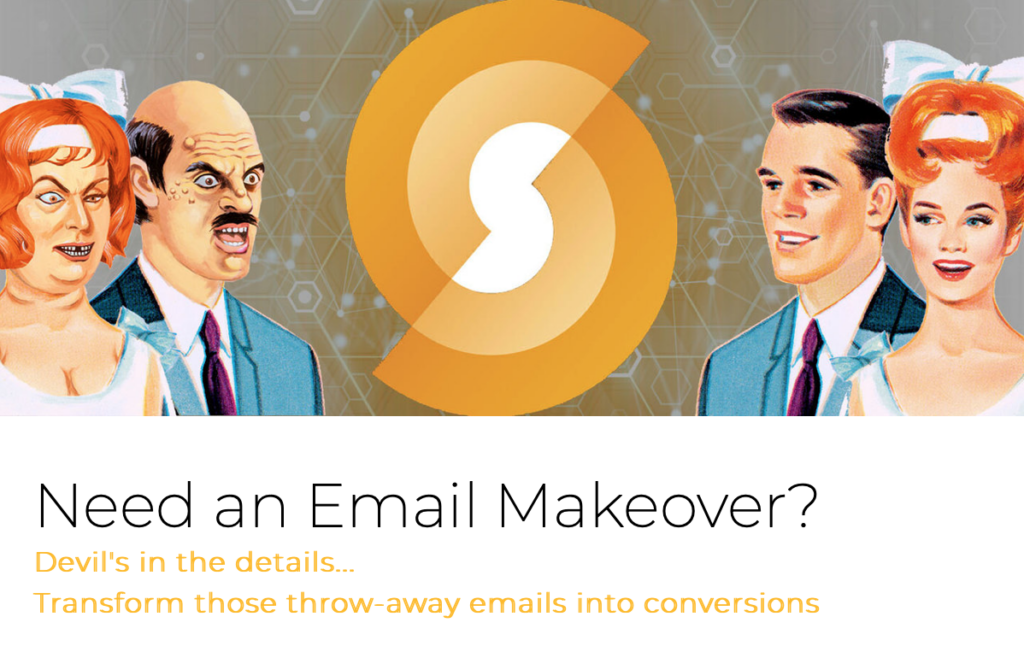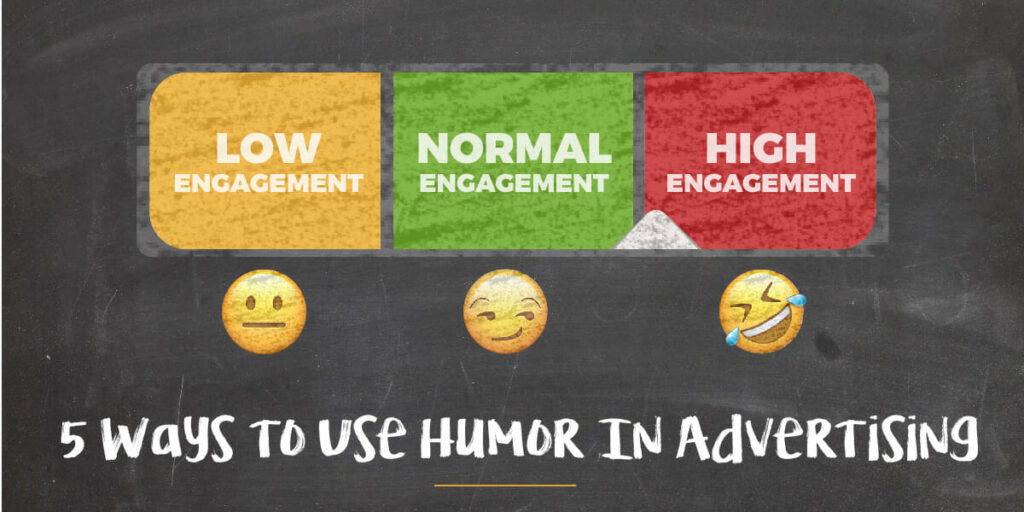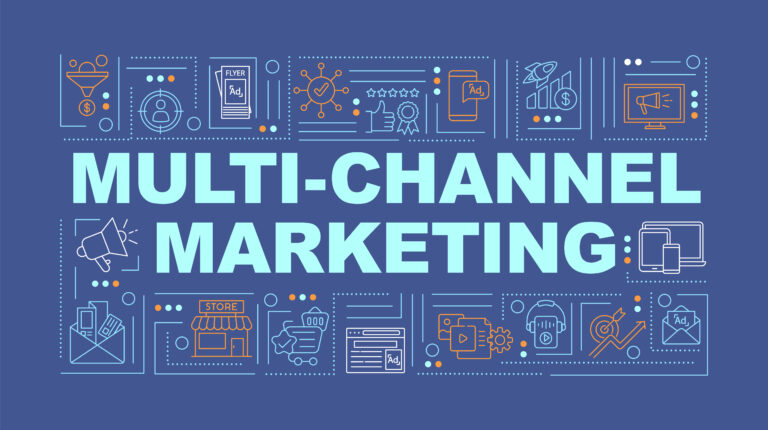In 2020, companies need to provide more than just a great product or service. The starting point is to provide an offering that meets a real need, but there’s an unexpected element that is often overlooked when companies begin pushing out what it is they’ve worked so hard to create. What is this secret ingredient? Creating an actual bond with your audience. Do they feel something when they see your social ad, landing page, video, or email? Is there an emotion that is triggered when someone sees your message? If not, your offering might be overlooked, forgotten, or even intentionally ignored.
Humor is an important tool that, when used correctly, can take your product, service, or brand exponentially further than using the cut and dry approach. When you actually provide your audience with something that triggers an emotion, it makes an impact. Ever wonder why some of the biggest brands use advertisements that are completely random, unexpected, or even downright ridiculous? It’s because the “here’s why are product is the best” approach rarely forms a bond with people – it’s boring, predictable, and doesn’t reward people for their time and attention. Here’s 5 types of humor that can help you create a better connection with your audience.
1. The Surprise Approach
As we know from a real-life basis, surprise is known to trigger a comedic response. Can’t you remember a time that someone said something completely off color, or did something totally unexpected? The initial reaction was “Wow, how did that just happen!” and after the shock wears off, a feeling of “Wow that was hilarious. I mean, who does that?” kicks in. Of course, this has to be done tastefully – which is the tricky part. It may help to run your ideas across a group so a team can filter down to a message that’s funny, but not out-of-line.
Like the class clown in the above example, your advertising message can pull off this same tactic. Choose a bold headline that makes people feel slightly shocked for a split second. Send an email with an exploding glitter box in it. Create a video with dialogue that rides the fence of being down right startling. Find a way to incorporate your offering in there, but try to hit the same chord as the person jumping out of a wedding cake does. It’s random, ridiculous, and it leaves an impression.
2. The Personification Tactic
Personification is used to relate objects, plants, and animals to people. It’s one of the most classic tricks in the book, but it can pack a punch. Poets use it, and so can you. You know those ads that feature an animal dressed in a suit and tie, driving a car, or reading a newspaper. These ads help the message to be more entertaining and memorable. Does personification always make sense to use? Of course not, but people are sophisticated, they’ll get the joke, and they will likely appreciate it.
The use of personification is endless. Take Gieco’s talking lizard, the Michelin man, or Tony the Tiger for example – they’re brand mascots, but personifications nonetheless. They help bring an added sense of humor to the ad, cereal box, or brand as a whole. We love the people that make us laugh, and believe it or not, we tend to favor the brands that do the same. We like things that are out of the ordinary, and advertising is a platform for making unrealistic possibilities come to life.
3. Putting Puns to Use
This is one of the easiest types of humors to go wrong with, so tread lightly. A pun is the creative use of words to bring on a new meaning that results in a comedic effect – a play on words so to speak. It’s a string of words that collectively use cleverness to create an ah-ha moment. Some people avoid puns altogether, because the likelihood of underdelivering is pretty high if there’s not enough of a bang. Let’s take a look at some puns, below.
An unfortunate pun:
“I went to a seafood disco last week…and pulled a mussel.”
A pun that’s almost worth using:
“I wasn’t originally going to get a brain transplant, but then I changed my mind.”
Here’s a pun that could be worth using:
“I put all my spare cash into an origami business. It folded.”
Now, you wouldn’t use a pun in the full joke format seen above, but you could use a pun in a shorter phrase. It seems that there’s a direct correlation with how clever the play on words is, and the success of it actually making people laugh. It takes time and outside feedback to make sure your pun is clever enough, and you have to evaluate it to be sure it’s a fit for your audience. Warning: go wrong and people will pretty much hate you…
4. Being Exaggerated
This type of humor blows things way out of proportion, to a level that makes people appreciate just how unbelievably extra it is. It can be used to really hammer out a point, or to make fun of a common scenario or real-life issue. While it makes people understand that you’re trying to make a point, it doesn’t necessarily make them more receptive to the point you’re making. But, It does help your message be more unique and expressive, which is almost always a plus.
5. The Use of Comparison
This tactic puts two or more things beside each other to create a stark contrast. You’ve seen big brands use this before, from food companies comparing there juicy burger, to the crusty old version of their competitors, to car companies showing you what it’s like to drive an ordinary car in contrast to what it’s like to drive their electric sedan, luxury SUV, or built-to-last truck. Many of these comparisons go over the top, and that’s what makes them appeal to our sense of humor. Thing X isn’t necessarily “this much better” than thing Y, but when there’s a sense of humor woven into in the comparison, the consumer gets it – they appreciate the boldness. For an example, refer to the above image, this is an exaggeration and comparison (two birds with one stone).
When and Where Is Humor a Good Fit?
In some cases, humor can add an extra kick to your message. In others, it can be distasteful or distracting. Let’s focus on some areas where it might make sense to add a comical touch. Because we’re a digital agency, we’re going to put it in terms of some of the most common things we work with on the day to day.
On the 404 Page
When users hit a 404 (page not found) they’re often frustrated and annoyed that the link won’t take them to the place they are trying to reach. It makes sense to incorporate a little bit of lightheartedness to your 404 page and to let people know that yeah, this is annoying, we’re sorry, and we’ll at least try to compensate for the inconvenience by giving you a laugh. Here’s a good example of a 404 page that does a good job of taking some of the weight off:
In Chatbots
We’ve all seen chatbots before. They are used to create greater customer satisfaction, increase customer base, and to help cut down on errors. To be frank, they can get a bit redundant or even annoying to some people. The best way to create a good chatbox experience for your users is to give them some personality. People realize they’re talking to a robot, but by giving your bot a sense of humor, wither it be an outlandish character, or a witty personality, your helping users feel a bit more entertained throughout the process.
On Your About Page
The about page is where you show the personality of your brand, feel of your team, and the purpose of your company. This is a great place to incorporate what makes your brand distinct, and to show people that you have fun producing the work that you produce. Many companies incorporate humor to their team member photos, individual bios, headlines, or even in a video reel of the team away from work. The about page is an opportunity to show people the core of your company, what makes you tick, and humor tends to be a nice compliment.
In Emails
How many emails does the average person get a day? Alot. This is why your email has to stand out from the hundreds of others that flood your recipient’s inbox every week. Struggling with open rates? Try sending the email out with a subject line that uses one of the 5 types of humor. But don’t stop there, try adding in an animated gif to your actual email or a punchy headline and sub-headline.

Looking for a team to help you find the right way to market your brand? Need a hand with making your message more effective? We can help.








